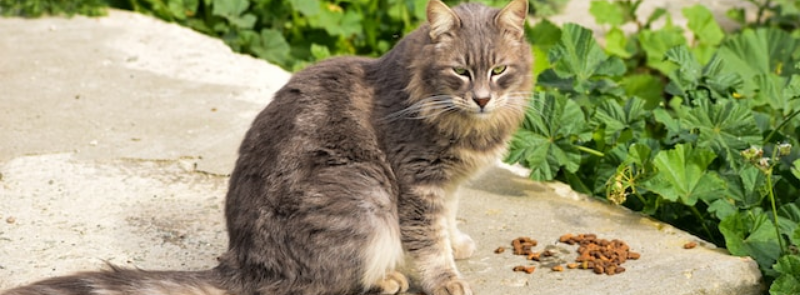
When It Occurs
Annually Last Tuesday in February
Timeline
Days Passed (989)
# Hashtags
#WorldSpayDay #PetControl
We appreciate promoting the responsible care of animals, and that's why we applaud World Spay Day, occurring on the fourth Tuesday in February! While the idea of sterilizing animals may seem tough, the reality is that the failure to spay and neuter dogs and cats leads to millions of unwanted animals facing homelessness, hunger, or being euthanized in shelters worldwide. While celebrating animal sterilization may elicit mixed feelings, it's essential to recognize that the alternative—putting countless animals down—is a much harsher reality.
History: World Spay Day was established in 1995 by the Doris Day Animal League, an animal advocacy organization founded by the actress and animal welfare activist Doris Day. Originally known as "Spay Day USA," the event focused on promoting spaying and neutering as a humane solution to the problem of pet overpopulation in the United States. Over time, the event gained international recognition and became known as "World Spay Day," expanding its reach to include animal welfare organizations and advocates around the world.
Since its inception, World Spay Day has played a significant role in reducing the number of unwanted animals and raising public awareness about the benefits of spaying and neutering. The event is now organized by the Humane Society of the United States (HSUS) and the Humane Society International (HSI), along with other animal welfare organizations.
Significance of Spaying and Neutering:
-
Population Control:
- Spaying and neutering are the most effective methods for controlling the pet population. By preventing unwanted litters, these procedures reduce the number of animals that end up in shelters or on the streets, where they may suffer from neglect, starvation, or abuse.
-
Health Benefits:
- Spaying and neutering offer several health benefits for pets. Spaying (removing the ovaries and uterus of female animals) eliminates the risk of uterine infections and reduces the risk of breast cancer, which is fatal in approximately 50% of dogs and 90% of cats. Neutering (removing the testicles of male animals) prevents testicular cancer and reduces the risk of prostate problems.
-
Behavioral Benefits:
- Neutered males are less likely to exhibit aggressive or territorial behaviors, such as marking territory with urine or fighting with other animals. Spayed females are less likely to go into heat, which can result in unwanted behaviors such as yowling or attracting male animals.
-
Reducing Euthanasia Rates:
- Each year, millions of animals are euthanized in shelters due to overpopulation and lack of homes. Spaying and neutering help reduce the number of animals entering shelters, ultimately lowering euthanasia rates.
-
Promoting Responsible Pet Ownership:
- Spaying and neutering are key components of responsible pet ownership. By ensuring that pets do not contribute to the overpopulation problem, pet owners demonstrate their commitment to the well-being of their animals and the broader community.
How It’s Celebrated:
-
Spay/Neuter Clinics:
- Many animal shelters, veterinary clinics, and animal welfare organizations offer low-cost or free spay/neuter services on World Spay Day. These clinics provide an opportunity for pet owners to have their animals spayed or neutered at an affordable price, making the procedure accessible to more people.
-
Educational Campaigns:
- World Spay Day is often marked by educational campaigns aimed at raising awareness about the importance of spaying and neutering. These campaigns may include social media outreach, public service announcements, and community events that provide information about the benefits of spaying and neutering and how to access services.
-
Fundraising Events:
- Animal welfare organizations may host fundraising events on World Spay Day to support their spay/neuter programs. These events can include charity walks, auctions, or benefit dinners, with proceeds going toward funding spay/neuter surgeries for animals in need.
-
Adoption Drives:
- Some shelters and rescue organizations hold adoption events on World Spay Day, offering reduced adoption fees or other incentives to encourage the adoption of spayed/neutered animals. These events help connect homeless animals with loving families while promoting the importance of responsible pet ownership.
-
Spreading Awareness:
- Individuals can participate in World Spay Day by spreading awareness within their communities. This might involve sharing information on social media, distributing flyers, or talking to friends and family about the importance of spaying and neutering pets.
-
Volunteering:
- Volunteering at a local animal shelter or spay/neuter clinic is another way to support the cause. Volunteers can help with organizing events, assisting with animal care, or providing administrative support to help the organization run smoothly.
Fun Facts:
-
One Pair, Many Offspring:
- A single pair of cats and their offspring can produce as many as 420,000 kittens over seven years, while a pair of dogs and their offspring can produce up to 67,000 puppies in six years. Spaying and neutering help prevent such exponential population growth.
-
Widespread Impact:
- Since the inception of World Spay Day, millions of animals have been spayed or neutered as a result of the event’s efforts, significantly reducing the number of unwanted animals and helping to prevent pet overpopulation.
-
International Reach:
- World Spay Day is now observed in over 70 countries around the world, with thousands of events and initiatives taking place each year to promote spaying and neutering.
Impact: World Spay Day has a profound impact on animal welfare by promoting spaying and neutering as a humane and effective solution to pet overpopulation. The event helps to reduce the number of homeless animals, decrease euthanasia rates, and improve the health and behavior of pets. By raising awareness and providing access to affordable spay/neuter services, World Spay Day supports responsible pet ownership and contributes to the well-being of communities worldwide.
Conclusion: World Spay Day is a vital observance that highlights the importance of spaying and neutering pets to address the issue of animal overpopulation. By participating in events, supporting spay/neuter programs, and spreading awareness, individuals can make a significant difference in the lives of animals and help create a more compassionate and responsible society. Whether through direct action or education, World Spay Day encourages everyone to contribute to a world where all animals are cared for and loved.


